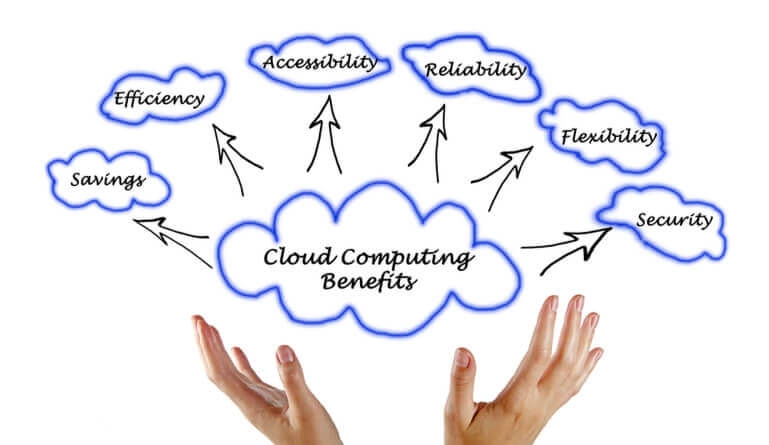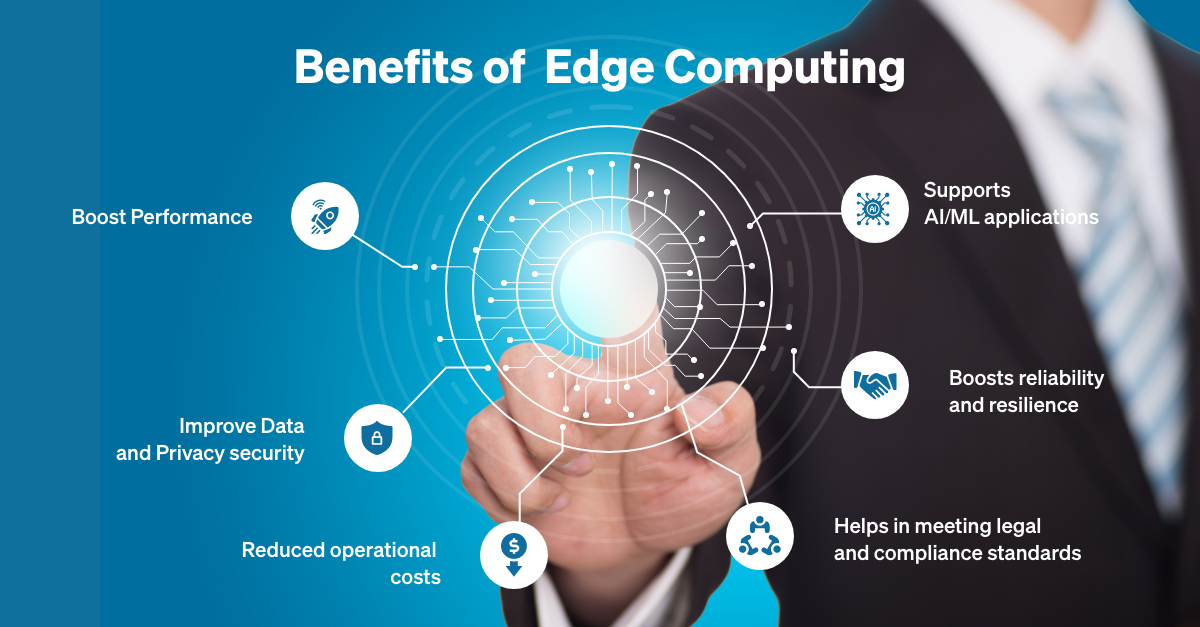
Cloud computing has revolutionized businesses’ operations, providing scalable, flexible, and cost-effective IT infrastructure and services solutions. As the demand for cloud-based solutions continues to grow, new trends are emerging that shape the future of cloud computing. This article explores the expansion of cloud computing, highlighting the latest trends in cloud services and infrastructure.
Cloud computing has become a cornerstone of modern IT strategy, enabling organizations to leverage remote servers hosted on the Internet to store, manage, and process data. The benefits of cloud computing, such as reduced costs, enhanced scalability, and improved accessibility, have driven its widespread adoption across various industries. This article delves into the current trends in cloud computing, focusing on advancements in cloud services and infrastructure.
Evolution of Cloud Computing
Cloud computing has evolved significantly since its inception, transitioning from basic storage and computing services to sophisticated platforms that support a wide range of applications and services. This evolution can be categorized into several phases:
1) Early Beginnings
The concept of cloud computing dates back to the 1960s when computer scientist John McCarthy suggested that computing could be organized as a public utility. However, this began to take shape with the advent of internet-based services.
2) In the late 1990s and early 2000sRise of IaaS, PaaS, and SaaS
The development of cloud computing saw the emergence of three primary service models:
- Infrastructure as a Service (IaaS): Provides virtualized computing resources over the internet. Examples include Amazon Web Services (AWS) and Microsoft Azure.
- Platform as a Service (PaaS): Offers hardware and software tools over the internet. Google App Engine and Heroku are notable examples.
- Software as a Service (SaaS): Delivers software applications online. Examples include Salesforce, Google Workspace, and Microsoft Office 365.
3) Multi-Cloud and Hybrid Cloud Environments
As cloud technology matured, organizations began adopting multi-cloud and hybrid cloud strategies. Multi-cloud involves using services from multiple cloud providers to avoid vendor lock-in and enhance resilience. Hybrid cloud combines on-premises infrastructure with public and private cloud services, offering greater flexibility and scalability.
Current Trends in Cloud Services
The cloud services landscape continually evolves, with new trends shaping how businesses leverage cloud technology. Some of the most significant trends include:
1) Serverless Computing
Serverless computing, or Function as a Service (FaaS), allows developers to build and run applications without managing the underlying infrastructure. Serverless platforms automatically scale resources and only charge usage, making it a cost-effective solution. Popular serverless platforms include AWS Lambda, Google Cloud Functions, and Azure Functions.
2) Edge Computing
Edge computing brings computation and data storage closer to data generation sources, reducing latency and improving performance. This trend is driven by the proliferation of IoT devices and the need for real-time data processing. Edge computing enhances applications that require immediate data analysis, such as autonomous vehicles, smart cities, and industrial automation.
3) Artificial Intelligence and Machine Learning

Cloud providers increasingly integrate artificial intelligence (AI) and machine learning (ML) services. These technologies enable organizations to analyze vast amounts of data, gain insights, and make data-driven decisions. Examples of AI and ML services include AWS SageMaker, Google AI Platform, and Azure Machine Learning.
4) Kubernetes and Container Orchestration
Kubernetes has emerged as the de facto standard for container orchestration, allowing organizations to deploy, manage, and scale containerized applications. Cloud providers offer managed Kubernetes services, such as Amazon EKS, Google Kubernetes Engine, and Azure Kubernetes Service, simplifying the deployment and management of containers.
5) DevOps and Continuous Integration/Continuous Deployment (CI/CD)
DevOps practices and CI/CD pipelines are essential for accelerating software development and deployment. Cloud providers offer a range of DevOps tools and services, enabling teams to automate the build, test, and deployment processes. Examples include AWS CodePipeline, Azure DevOps, and Google Cloud Build.
6) Blockchain as a Service (BaaS)
Blockchain technology is gaining traction across various industries, and cloud providers are offering Blockchain as a Service (BaaS) to simplify the development and deployment of blockchain applications. BaaS platforms provide pre-configured blockchain networks, reducing the complexity of setting up and managing blockchain infrastructure. Examples include IBM Blockchain Platform, Microsoft Azure Blockchain, and Amazon Managed Blockchain.
7) Quantum Computing
Quantum computing is an emerging field that promises to solve complex problems beyond the capabilities of classical computers. Cloud providers are investing in quantum computing research and offering quantum computing services. These services provide access to quantum processors, development tools, and simulators. Examples include IBM Quantum Experience, Microsoft Quantum, and Google Quantum AI.
Trends in Cloud Infrastructure
Advancements in cloud infrastructure are crucial for supporting the growing demand for cloud services. The following trends highlight the latest developments in cloud infrastructure:
1) Hyperconverged Infrastructure (HCI)
Hyperconverged infrastructure (HCI) integrates computing, storage, and networking resources into a single system, simplifying management and improving scalability. HCI solutions are gaining popularity as they reduce the complexity of traditional data center infrastructure and provide a more agile and cost-effective alternative.
2) Software-Defined Everything (SDx)
Software-defined everything (SDx) refers to the abstraction of hardware resources through software, allowing for more flexible and efficient IT infrastructure management. SDx encompasses various technologies, including software-defined networking (SDN), software-defined storage (SDS), and software-defined data centers (SDDC). These technologies enable organizations to automate and optimize their infrastructure, improving agility and reducing costs.
3) 5G and Network Innovations
The rollout of 5G networks is set to revolutionize cloud infrastructure by providing faster and more reliable connectivity. 5G’s low latency and high bandwidth capabilities will enhance the performance of cloud services, enabling new applications such as augmented reality (AR), virtual reality (VR), and autonomous systems. Additionally, advancements in network technologies, such as software-defined WAN (SD-WAN), are improving the efficiency and scalability of cloud networks.
4) Green Cloud and Sustainability
Sustainability is becoming a key focus for cloud providers as they strive to reduce their environmental impact. Green cloud initiatives aim to minimize energy consumption and carbon emissions using renewable energy sources, energy-efficient hardware, and optimized data center operations. Major cloud providers, such as AWS, Google Cloud, and Microsoft Azure, have committed to achieving carbon neutrality and investing in renewable energy projects.
5) Enhanced Security and Compliance
As cyber threats evolve, cloud providers are enhancing their security and compliance measures to protect customer data. Advanced security features, such as multi-factor authentication (MFA), encryption, and zero-trust architectures, are integrated into cloud services. Additionally, cloud providers are ensuring compliance with industry regulations and standards, such as GDPR, HIPAA, and ISO 27001, to build trust and confidence among customers.
6) Global Expansion and Edge Data Centers
Providers are expanding their global infrastructure footprint by building new data centers strategically to meet the growing demand for cloud services. Edge data centers, smaller facilities closer to end-users, are also deployed to reduce latency and improve performance. This global expansion enables cloud providers to deliver services with higher availability, reliability, and performance.
7) Advanced Monitoring and Management Tools
Effective monitoring and management of cloud infrastructure are essential for ensuring optimal performance and reliability. Cloud providers offer advanced monitoring and management tools that leverage AI and ML to provide real-time insights, predictive analytics, and automated remediation. These tools help organizations proactively identify and address potential issues, optimize resource utilization, and improve operational efficiency.
The Future of Cloud Computing
The future of cloud computing is bright, with continuous advancements in technology and infrastructure driving innovation and growth. The following trends are expected to shape the future of cloud computing:

1) Multi-Cloud and Hybrid Cloud Strategies
Multi-cloud and hybrid cloud strategies will continue to gain traction as organizations seek to leverage the benefits of multiple cloud providers and on-premises infrastructure. These strategies provide greater flexibility, resilience, and cost optimization, allowing businesses to tailor their cloud environments to meet specific needs.
2) AI-Driven Cloud Services
AI-driven cloud services will become more prevalent, enabling organizations to harness the power of AI and ML for a wide range of applications. From predictive analytics and automated decision-making to personalized customer experiences and intelligent automation, AI will transform business operations and drive innovation.
3) Serverless and Microservices Architectures
Serverless and microservices architectures will continue to gain popularity as they offer greater scalability, flexibility, and cost-efficiency. These architectures enable organizations to build and deploy applications more quickly and efficiently, reducing the complexity of managing underlying infrastructure.
4) Enhanced Security and Privacy
As cyber threats become more sophisticated, enhanced security and privacy measures will be critical for protecting sensitive data and maintaining customer trust. Cloud providers will continue to invest in advanced security technologies, such as AI-driven threat detection, encryption, and zero-trust architectures, to safeguard their services and infrastructure.
5) Sustainable and Green Cloud Initiatives
Sustainability will remain a key focus for cloud providers as they strive to minimize their environmental impact. Green cloud initiatives, such as renewable energy investments, energy-efficient data centers, and carbon neutrality commitments, will drive the industry toward more sustainable practices.
6) Quantum Computing Advancements
Quantum computing is expected to make significant strides in the coming years, unlocking new possibilities for solving complex problems. Cloud providers will continue to invest in quantum computing research and development, offering quantum computing services that enable organizations to explore and leverage this cutting-edge technology.
7) Edge Computing Expansion
Edge computing will play a crucial role in the future of cloud computing, enabling real-time data processing and analysis at the network’s edge. Expanding edge computing infrastructure will support various applications, from autonomous vehicles and smart cities to industrial automation and IoT.
8) Global Connectivity and 5G Integration
Integrating 5G networks and global connectivity initiatives will enhance the performance and accessibility of cloud services. 5G’s low latency and high bandwidth capabilities will enable new applications and use cases, driving further innovation and adoption of cloud computing.
The expansion of cloud computing has transformed the IT landscape, providing organizations with scalable, flexible, and cost-effective solutions for their infrastructure and service needs. As cloud technology continues to evolve, new trends are shaping the future of cloud services and infrastructure. From serverless computing and edge computing to AI-driven services and sustainable practices, the cloud computing industry is poised for continued growth and innovation.
Organizations that embrace these trends and leverage the latest advancements in cloud computing will be well-positioned to drive digital transformation, improve operational efficiency, and stay competitive in an increasingly digital world. The future of cloud computing is bright, and the possibilities are endless as technology advances and reshapes how we live and work.


